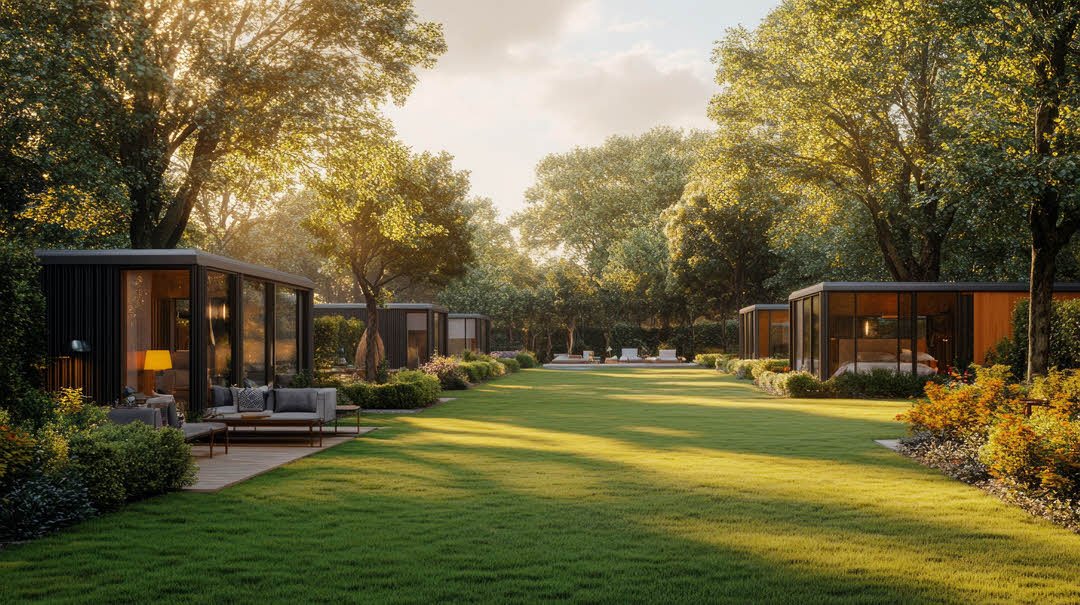Discovering Tiny Homes for Play and Getaways

Topics
Mobility: Ability to move with ease from one scenic locale to another.
Thoughtful Design: Tailored interiors perfect for bonding and relaxation.
Sustainability: Lower energy, water usage, and carbon footprint.
Affordability: Lower upfront costs, bills, and rental potential.
Community Access: Village-style retreats and social gatherings.
Rental Income: Growing appeal boosts short-term rental revenue potential.
Discovering Tiny Homes for Play and Getaways
Tiny homes have gained popularity not just as minimalist residences but also as charming, flexible spaces perfect for vacations, retreats, and recreational enjoyment. Typically under 400 sq ft, these compact dwellings—often built on trailers—provide a cozy, self-contained universe wherever you park it.
1. Mobile Freedom & Adventure
One major appeal is mobility: homeowners can easily hook the tiny house to a vehicle and relocate it. Imagine waking up lakeside one week and forest‑surrounded the next, without giving up home comforts.
2. Cozy, Custom Retreats
Tiny homes designed for recreation—often called park‑model or vacation tiny homes—focus on comfort and charm. They blend clever spatial design (lofts, built-in benches, fold-out tables) with aesthetic elements like large windows and natural materials.
Guests love their intimate ambiance, perfect for quality time and relaxation.
3. Eco‑Friendly & Cost‑Effective
Lower square footage means reduced energy needs, including smaller HVAC systems, fewer lights, and lower water usage. Many tiny homes even include solar panels, rainwater harvesting systems, or composting facilities, making them a sustainable alternative to traditional nature-focused getaways.
4. Affordability
Overall costs—from construction to utilities—are far less than conventional vacation homes.
5. Creating Community
Tiny home villages—like Delta Bay in California—showcase how recreation and community blend beautifully. With monthly rents under $800, these clusters cultivate shared spaces, off‑grid amenities, and annual tours like Camp Tiny House.
Such gathering spaces create vibrant hub-like retreats with recreational activities and social connections.
6. Boosting the Vacation Rental Market
Tiny homes are an increasingly appealing vacation rental option—platforms like Airbnb and VRBO feature listings ranging from beachside cottages to off-grid cabins.
With unique themes—such as at Tiny House Siesta in Florida—the intimate charm often outshines traditional hotels.
The Business of Play
Creative entrepreneurs are capitalizing on the trend. In North Carolina, a Campground transformed into an enchanting “fairy‑tale” tiny village—complete with themed units, petting zoos, and amenities—demonstrating tourism potential even before turning a profit.
Final Thoughts
Tiny homes crafted for recreation offer more than compact living—they provide mobility, ecological mindfulness, intimacy, community, and unique travel experiences. Whether it’s for personal escapes or hosting others in a charming getaway, tiny homes are rewriting the rules of vacation lodging.
If you’re dreaming of easy-to-maintain retreats with a tiny home and minimal environmental impact—or exploring income potential via vacation rentals—tiny homes deserve a serious look. Their blend of design ingenuity, ecological benefit, and social appeal makes them standout destinations in the world of recreational living.




